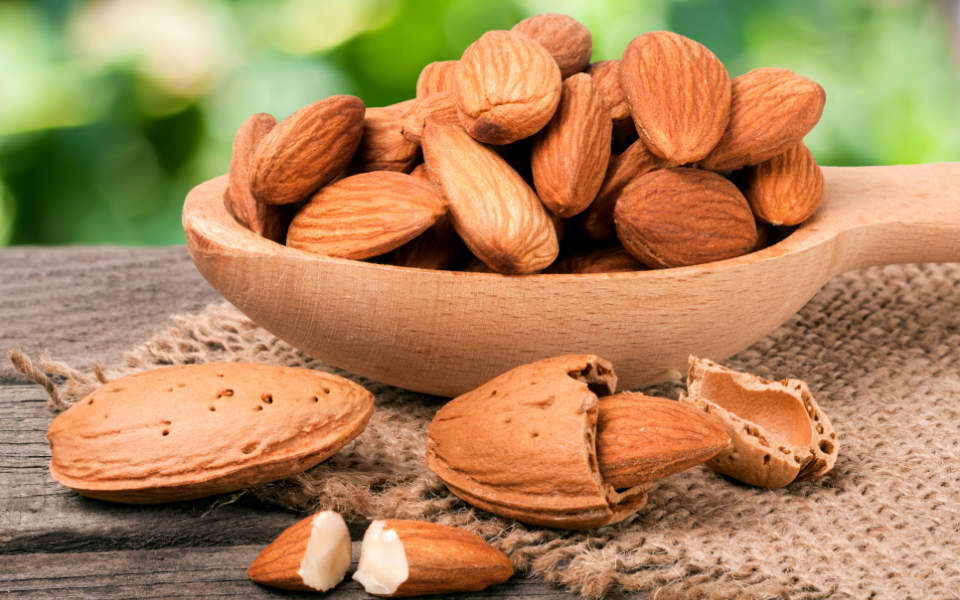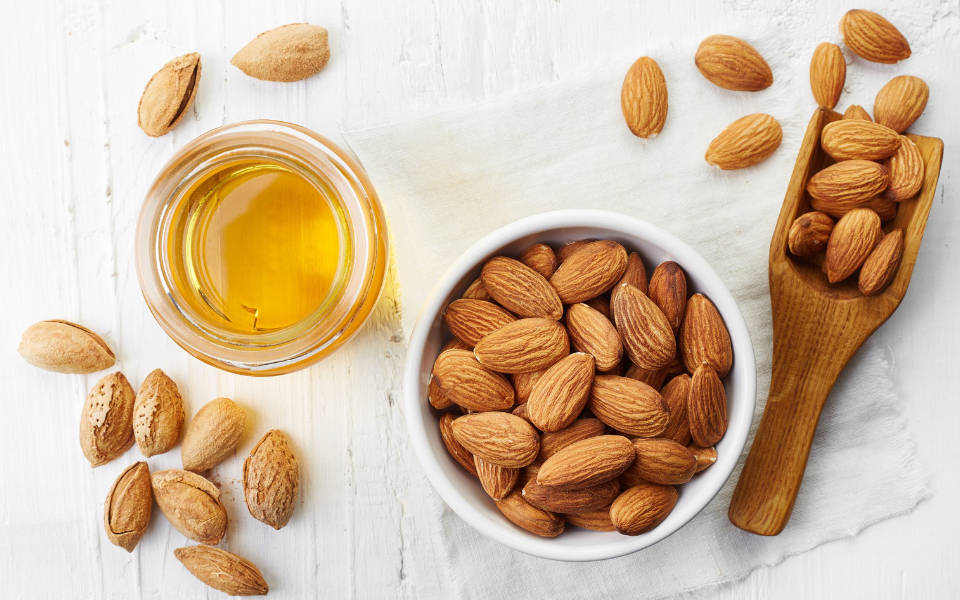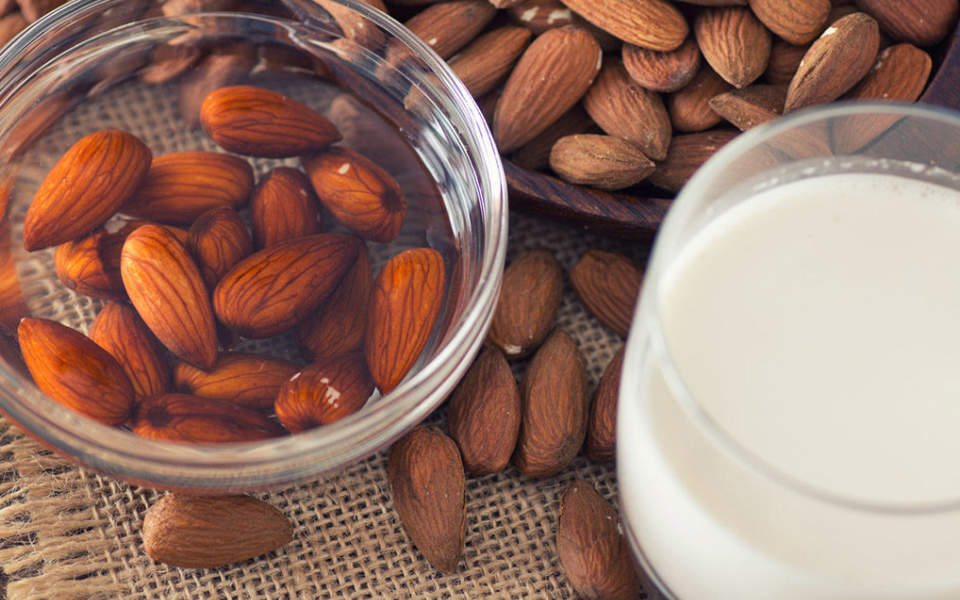Nuts, without a doubt, are some of the world’s best foods. They are rich in energy and nutrients and can even lower one’s risk of diabetes and heart disease.
While there are many nuts that provide these health benefits, the mildly sweet almond proves to be one of the best, if not the most popular. After all, the almond’s nutritional value makes it one of the healthiest foods in the world.
Where do Almonds Come From?
Almonds are derived from the Prunus dulcis tree, a species native to Iran and the Mediterranean. It grows best in such regions, as the tree thrives in optimal temperatures of 15 to 30 degrees Celsius.
The almond tree has long been domesticated by our ancient forefathers. Excavations show that it has been cultivated in as early as 3000 BC in the ancient sites of Jordan. It was even imported in Egypt, as almond nuts were also found in King Tut’s burial site.
The deciduous Almond tree is popularly known for its delicious output, which is not actually a nut, but rather, a drupe. The almond fruit has an outer covering or hull that is leathery and thick in composition. Inside this is a shell that bears the almond nut most people love.
Through globalization, almonds are now cultivated in Southern Europe, Northern Africa, and most notably, in California, USA. The latter provides 59% of the world’s exports, made possible by the 1 million hectares of land used for such trees.

Almond Varieties
Almonds are categorized through shell quality and taste.
1. Shell
While soft-shelled varieties are produced mainly in California, there are some produced by Spain. Examples include:
- Nonpareil. This famous Californian variety is known for its thick, elongated fruit covered by a pale, thin skin.
- Neplus. This Californian cultivar bears a long, flat drupe that has some characteristic wrinkles and folds.
- Mollar de Tarragona. Known to be bigger and wider, this Spanish variety has a dark brown colour and a rough texture.
The hard-shelled ones, on the other hand, usually come from Spain or Portugal. Examples include:
- Marcona. Grown in Alicante, Spain, Marconas are large, round, and rough almonds.
- Desmayo Largueta. This Spanish breed has a smooth, pointed almond fruit.
- Tuono. This large, double-meat hard shell variety is grown in Puglia, Italy.
- Ferragnes. This French cultivar has a semi-hard shell. Its fruit is brown, large, and slightly pointed.
- Ferraduel. Another French variety, this almond is known for its dark, brown skin. The fruit is enveloped in a wide, flat shell.
- Bonita. This medium-sized almond, which is found in Portugal, has a thick yet pale fruit.
- Casa Nova. This Portuguese variety has a big, flat, and rough drupe.
- Parada. Another Portuguese cultivar, the Parada bears a large, wide, and dark brown nut.
- Verdal. This large, flat, and good-tasting almond is another one of Portugal’s prized exports.
- Texas Mission. This hard-shelled Californian almond is heralded for its sweet, meaty nut.
2. Taste
There are 2 almond varieties available according to taste. One is sweet almond, which either comes with a hard or soft shell. Examples include the Ferragnes, Ferraduel, Oja, Ai, Texas Mission, and Dafadi varieties.
Another is bitter almond, which is grown from the Amara varieties of the P. dulcis tree. As the name suggests, it has a bitter taste because of the substance called amygdalin. Appearance-wise, bitter almonds are usually smaller and pointier.
In their raw forms, bitter almonds contain small amounts of hydrocyanic and prussic acid. Eating 7 to 10 pieces of these unprocessed nuts could be lethal, and as such is barred from sale in the US.
Are Almonds Good For You?
Yes of course. After all, an ounce of almonds – which equates to 23 kernels – contains the following:
- Calories – 164 kcal
- Total Fat – 14 grams (18% of recommended daily value)
- Saturated fat – 1.1 grams (6%)
- Monounsaturated fat – 8.945 grams
- Polyunsaturated fat – 3.495 grams
- Carbohydrates – 6.1 grams (2%)
- Dietary fibre – 3.5 grams (12%)
- Protein – 6 grams (12%)
It’s also packed with Vitamins such as:
- Vitamin E – 7.27 milligrams (32%)
- Riboflavin – 0.323 milligrams (25%)
- Niacin – 1.026 milligrams (6%)
- Thiamine – 0.058 milligrams (5%)
- Vitamin B6 – 0.039 milligrams (3%)
- Pantothenic acid – 0.134 milligrams (3%)
An ounce of almond nuts also comes with the following minerals:
- Copper – 0.292 milligrams (32%)
- Manganese – 0.618 milligrams (27%)
- Magnesium – 76.55 milligrams (19%)
- Phosphorous – 136.36 milligrams (19%)
- Zinc – 0.88 milligrams (8%)
- Calcium – 76.26 milligrams (6%)
- Iron – 1.05 milligrams (6%)
- Potassium – 208 milligrams (4%)
- Selenium – 1.2 micrograms (2%)
Are Almonds A Superfood?
Yes! After all, superfoods are defined as edibles with exceptional nutrient density. As mentioned in the almond’s nutrition facts above, this nut is rich in vitamins, minerals, and so much more. As such, it can provide many health benefits – all of which will be discussed below.
What are the Health Benefits of Almonds?

The health benefits of eating almonds are all too overwhelming. Loaded with nutrients, regular almond consumption can help with the following:
1. Promote better heart health
According to the British Heart Foundation, heart disease is the culprit behind 27% of all UK deaths. In solid figures, this is about 170,000 mortalities a year – which is 1 death every minute. Despite its prevalence, the risk can be reduced by keeping your blood pressure and cholesterol levels under control.
Fortunately, the almonds’ benefits for health focus on the heart. After all, it is rich with nutrients that help reduce cardiovascular disease risk. For one, it is rich with essential fatty acids. Each serving contains 8.945 grams of monounsaturated fats (MUFA), which can help lower the levels of bad fats (LDL).
Almonds can also help improve the levels of good fats (HDL), which is just as vital for heart health. To wit, every 10-point increase in HDL levels could decrease heart disease risk by half.
The same heart-healthy benefits can be reaped with polyunsaturated fatty acids, which are known to reduce blood cholesterol levels.
Almonds are also rich in Vitamin E, which work by delaying the oxidation of LDL. By doing so, almonds may help postpone the onset of atherosclerosis, which is the build-up of plaques in the arterial walls. As this restricts blood flow, atherosclerosis could eventually progress to a heart attack or stroke.
With these components, it is not surprising that almonds bring about better heart health. Proving such claims is an Indian meta-analytic study that has generated the following results:
- Almonds help in the reduction of total cholesterol by 0.124 mmol/L to 0.212 mmol/L (dependent on dosage, i.e. the higher serving – 45 grams, the lower the total cholesterol levels.)
- HDL can be increased by as much as 14% with the consumption of 10 grams of soaked almonds.
- The consumption of 10 grams of almonds for 6 to 12 weeks is instrumental in lowering triglyceride levels.
2. Improve blood sugar levels
In the UK, 1 out of 16 people have diabetes – and this costs the NHS 10 billion pounds a year. While compliance with blood sugar medications is key, regular almond intake may be beneficial to the cause as well.
In a Chinese study, participants with type 2 diabetes were supplemented with 60 grams of almonds to replace 20% of their daily caloric intake. This diet was enforced for 4 weeks, with a 2-week washout in between.
Results show that those who underwent an ‘almond diet’ demonstrated lower levels of fasting insulin, which means that the person has become ‘sensitive’ to the effects of insulin. The diet also helped reduce fasting glucose levels, which measures the glucose in the bloodstream following overnight fasting. High levels of these are associated with insulin resistance and diabetes.
Almonds make this possible due to its high magnesium content, which has been noted to help reduce a person’s risk of diabetes. It also has a high MUFA content, which can assist in improving blood sugar levels and insulin production.
3. Fight inflammation
Inflammation is the body’s way of defending itself from toxins, infections, and injuries. Should this persist, it could lead to chronic inflammatory diseases such as cancer, diabetes, heart disease, and asthma.
With that being said, the health benefits of eating almonds can be traced back to its anti-inflammatory action. Its antioxidants – Vitamin E, polyphenols, and flavonoids – help fight oxidative stress, which could trigger inflammatory processes in the body. These explain why almonds are good for the heart and the metabolic system, among many other parts of the body.
4. Reduce cancer risk
The many health benefits of almonds are highly attributed to the high Vitamin E content. After all, you get 7.27 milligrams of Vitamin E – which is 7.27% of the recommended daily value – with every ounce of almonds.
Apart from improving cardiovascular health, almond’s high Vitamin E content may help fight cancer. As an antioxidant, it can neutralize free radicals that can damage the cells and lead to certain cancers.
According to a report, Vitamin E can help reduce the prevalence of prostate cancer, especially in smokers. It may also help lower colon cancer risk, especially in individuals aged 65 years old and above. Additionally, Vitamin E may help reduce deaths brought about by bladder cancer.
Apart from Vitamin E, almonds also contain high amounts of flavonoids and proanthocyanidins. As antioxidants, they are also instrumental in fighting off cancer.
5. Sharpen memory
Almonds benefit the brain as well. It is rich in B vitamins that work to boost your memory. After all, these nutrients provide nourishment to your neurons – allowing them to work better than usual.
6. Lower eye disease risk
True to its antioxidant function, Vitamin E-rich fares such as almonds may help promote eye health as well. With daily snacking, you may just reduce your risk of cataract and age-related macular degeneration, among many other visual conditions.
7. Boost skin and hair health
Almonds are not only good for the inside, they’re good for your appearance too!
Almonds’ benefits for the skin primarily come from the high Vitamin E content. This vitamin can help nourish and soften your skin, providing it with better barrier function. With its anti-inflammatory action, Vitamin E can help soothe troubled skin as well.
As an antioxidant, Vitamin E in almonds may help curb skin ageing. According to a study, it helps fight off free radicals, which are brought about by pollution, smoke, and UV exposure. If left unneutralized, these free radicals can lead to wrinkles, lines, and other signs of skin ageing.
More than just helping the skin, almonds can benefit the hair as well! They are rich in Omega 3- and 6-fatty acids, both of which are useful for your locks. According to a report, these help promote hair growth, which may be due to its effects on boosting circulation to the scalp. With better blood flow, the hair receives the oxygen and nutrients they need for lustrous growth.
Rich in Magnesium, almonds may also help reduce hair fall. With its Vitamin A, B, and D content, it may help prevent dandruff as well.
8. Promote weight management
Almond calories are particularly low – yet they are rich in protein and fibre. They can make you feel fuller for longer, which is perfect for those who wish to cut their dietary intake. According to a study, 43 grams of almonds a day can help curb hunger – and reduce your desire to eat.
Eating Almonds: Raw, Roasted, or Soaked?

Almonds come in various preparations:
1. Raw
Raw, as the name suggests, is almond in its natural form. As such, it is a favourite amongst Paleo dieters. As it has not been treated in any way, it is one of the healthiest forms of almonds available in the market.
Can I Eat Raw Almonds?
Yes, you can eat almonds raw. However, you should go for raw almonds that have been pasteurized to avoid contamination issues.
At the same time, you need to make sure that what you’re eating is a sweet almond. As mentioned, bitter almonds, which are smaller and pointier, can be quite lethal.
2. Roasted
Roasting, on the other hand, is done to improve the almond’s texture, taste, and aroma. In some cases, it is done to separate the nut from its shell. It is usually done through 2 methods: dry or oil roasting. Any of these processes take place on a frying pan or in an oven.
While roasting brings a unique taste, the process may affect the almonds’ nutrition in the following ways:
- Long roasting times and extremely high temperatures can oxidise the almonds’ monounsaturated and polyunsaturated fats.
- Roasting changes the nut’s structure. This can lead to the oxidation of the good fats, even during storage. For this reason, roasted nuts have a shorter shelf-life compared to raw nuts.
- Apart from affecting the essential fatty acids, nutrients such as magnesium, phosphorous, and Vitamin E can be lost during the roasting process. Such can lead to a decrease in riboflavin and thiamine content as well.
- The quantity of antioxidants is significantly decreased with exposure to 150 degrees Celsius of heat.
- Roasting can form harmful chemicals such as acrylamide. This can occur when almonds are roasted between 139 to 162 degrees Celsius for 25 minutes.
3. Soaked
As the name suggests, this type of almond is soaked in water. This method of preparation is highly recommended because of the benefits of almonds soaked in water. For one, this method helps in the removal of the peel. This covering is rich tannins, which gets in the way of nutrient absorption. By soaking the almonds, you could easily remove the peel for better nutrient release.
To soak almonds, you should immerse a handful of nuts in half a cup of water. The almonds should be covered, and let to soak for about 8 hours. After this, the water could be drained and the almond skin peeled. When stored in an airtight container, soaked almonds could last for over a week.
How Many Almonds to Eat Per Day?
This will depend on the almond benefits that you would like to achieve. Generally speaking, the recommendation is about ⅓ cup of 40 grams.
For a boost of energy, you can benefit from 14 grams of almonds – which is 8 to 10 nut pieces. This amount also makes for healthier eating, according to a report.
Results showed that those who ate almonds have better healthy eating indices, and ergo, better-quality diets. After all, they had high almond protein and fatty acid intake – all the while maintaining a lower caloric consumption.
In terms of weight loss, a report has shown that eating 35 grams (¼ cup) of almonds every day is recommended. This is drawn from a study that compared two groups on low-calorie diets, one with almonds and one without. Expectedly so, those who ate almonds lost more weight in the belly area – and the entire body in general.
While the almonds’ benefits for health are overwhelming, it’s best if you kept within the recommended portions as stated above. If not, you may end up suffering from these side effects:
- Digestive problems such as bloating, constipation, and an upset stomach
- Vitamin E overdose, which could lead to blurry vision, body weakness, and diarrhoea
- Medication interaction problems, as almonds’ high manganese content can interfere with the action of antibiotics, blood pressure medications, and laxatives
- Weight gain in sedentary people, as 100 grams of almonds contain about 50 grams of fat
Types of Almonds for Consumption
Are you wondering what to make with almonds? As there are quite a lot of almond types available, you’re sure to have a ball with any of these preparations:
- In Shell. As the name suggests, the fruit remains within its hard shell.
- Kernel. This is the part of the almond fruit that is commonly eaten. One type is unprocessed or natural. Another kernel type is blanched, where the brown skin is removed.
- Slices or Flakes. These natural or blanched kernels are thinly sliced. They are usually used in almond recipes such as salads or desserts.
- Slivers. These are almond nuts that are split lengthwise. It has a crunchier texture, and as such used in many recipes for almonds.
- Meal. This flour-like ingredient is often used to thicken or enhance foods. It can also be used to coat meat or vegetables for gluten-free almond recipes.
- Milk. This delicious liquid is made from pulverized and strained individuals. Almond milk’s nutrition content makes it a good alternative for vegans and those with lactose intolerance.
How to Store Almonds
Almonds should be stored in an airtight container. They are best kept in a cool, dry place. When placed in the fridge, almonds can last a few months. When stored in the freezer, these delicious nuts could last for a good 2 years.
As almonds have the tendency to absorb smells, keep it away from odorous foods, i.e. onions and garlic.
Almond Recipes

With the many health benefits of eating almonds, you should remember to add them to your daily meals. Get to enjoy the almonds’ nutritional value with these tasty recipes:
1. Kale and Brussels Sprout Salad
This crushed almond recipe is perfect for vegan and weight-watchers alike. With its delicious Tuscan kale, this salad can fill you in a nutritious way.
2. Saffron Quinoa with Dried Cherries and Almonds
This is one of the best almond recipes for healthy individuals. It’s made with fibre-rich quinoa, coupled with high almond protein content.
3. Gluten-Free Crab Cakes with Snap Pea Salad
This gluten-free recipe with chopped almonds can help reduce bloating and lactose intolerance, among many other things.
4. Paleo Granola with Coconut and Almonds
This easy-eat snack is a healthy mixture of almonds, coconut, and mixed seed granola.
5. Almond Apricot Food Processor Cake
You don’t have to be an expert to make an almond cake recipe. After all, you can do this easily with the help of your trusty food processor.
6. Flourless Almond Cookies with Orange Zest, Cardamom, and Pistachios
If you are looking for a cookie with almond recipe, then this is perfect for you. It has a unique zing, given its orange zest and cardamom ingredients.
7. White Chocolate Fruit Cake Bars
This is one of the healthiest almond recipes for baking. Made with dried fruit, orange zest, and almonds, it’s a dessert that transcends all seasons.
8. Waffles with Strawberry and Almonds
While this is a tasty almond flour recipe, this can be made with whole wheat flour as well.
Conclusion
The almond is actually a drupe, not a nut, that is derived from the Prunus dulcis tree. It is categorized according to the shell (soft or hard) and taste (sweet or bitter).
A true superfood, almonds are rich in a variety of nutrients. They are brimming with almond proteins, fibre, Vitamin E, Riboflavin, Copper, and Manganese, to name a few.
With these vitamins and minerals, eating almonds can help you achieve better heart health and lower blood sugar levels. They can also fight inflammation, which could in turn reduce your cancer risk. The nutrients in almonds can also sharpen your memory and improve your eye, skin, and hair health. As a bonus, almonds may help you achieve weight control as well.
To achieve these, you should follow the recommended daily consumption of 14 to 35 grams every day.


